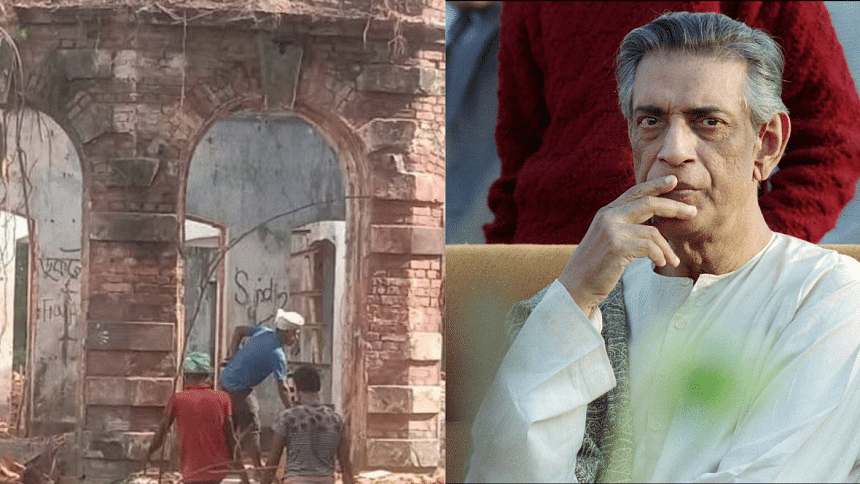Satyajit Ray wanted to feature photos of ancestral Mymensingh home: Sandip Ray

The ancestral home of Satyajit Ray, which had previously served as the Mymensingh Shishu Academy, is currently being torn down to make room for a new semi-concrete building. This historic house once belonged to Upendrakishore Ray Chowdhury, a prominent writer and publisher, who was the father of poet Sukumar Ray and grandfather of legendary filmmaker Satyajit Ray.
Following media reports of the demolition, NDTV reached out to filmmaker Sandip Ray, Satyajit Ray's son, to reflect on the family's connection to the property.
"I never visited Bangladesh to see the house, and neither did Baba [Satyajit Ray]," Sandip Ray shared with NDTV. "I only saw photographs of it. I remember Baba had wanted to include images of the house in the documentary he was making on Sukumar Ray."
He added that a trusted member of Satyajit Ray's production team had been sent to Bangladesh to take pictures of the house. However, upon seeing its dilapidated condition, Satyajit Ray decided not to use those images in the documentary, feeling deeply disappointed.
Situated on Harikishore Ray Chowdhury Road in Mymensingh, the over-100-year-old structure stands as a testament to the Ray family's cultural and literary legacy.
In response to the demolition, the Indian government has expressed its concern and urged Bangladesh to reconsider the decision. India also offered support to help restore and transform the building into a literary museum.
"We are deeply saddened to learn about the demolition of the ancestral property of acclaimed filmmaker and writer Satyajit Ray in Mymensingh, which belonged to his grandfather, the renowned writer Upendrakishore Ray Chowdhury," India's Ministry of External Affairs said in a statement.
Noting that the building is now state-owned and in a poor state of preservation, the statement emphasised the importance of the site as a symbol of the Bengali cultural awakening. The MEA suggested that restoring the house as a museum would be a more meaningful tribute and highlighted India's willingness to assist in such an effort.

 For all latest news, follow The Daily Star's Google News channel.
For all latest news, follow The Daily Star's Google News channel. 






Comments